- Home
- Nathaniel Hawthorne
Scarlet Letter (Barnes & Noble Classics Series)
Scarlet Letter (Barnes & Noble Classics Series) Read online
Table of Contents
FROM THE PAGES OF
Title Page
Copyright Page
NATHANIEL HAWTHORNE
THE WORLD OF NATHANIEL HAWTHORNE AND THE SCARLET LETTER
Introduction
PREFACE TO THE SECOND EDITION
THE CUSTOM-HOUSE
I - The Prison-Door
II - The Market-Place
III - The Recognition
IV - The Interview
V - Hester at Her Needle
VI - Pearl
VII - The Governor’s Hall
VIII - The Elf-Child and the Minister
IX - The Leech
X - The Leech and His Patient
XI - The Interior of a Heart
XII - The Minister’s Vigil
XIII - Another View of Hester
XIV - Hester and the Physician
XV - Hester and Pearl
XVI - A Forest Walk
XVII - The Pastor and His Parishioner
XVIII - A Flood of Sunshine
XIX - The Child at the Brook-Side
XX - The Minister in a Maze
XXI - The New England Holiday
XXII - The Procession
XXIII - The Revelation of the Scarlet Letter
XXIV - Conclusion
ENDNOTES
INSPIRED BY THE SCARLET LETTER
COMMENTS & QUESTIONS
FOR FURTHER READING
FROM THE PAGES OF
THE SCARLET LETTER
She took the baby on her arm, and, with a burning blush, and yet a haughty smile, and a glance that would not be abashed, looked around at her townspeople and neighbours. On the breast of her gown, in fine red cloth, surrounded with an elaborate embroidery and fantastic flourishes of gold thread, appeared the letter A.
(page 46)
It had the effect of a spell, taking her out of the ordinary relations with humanity, and inclosing her in a sphere by herself.
(page 46)
“Up to that epoch of my life, I had lived in vain. The world had been so cheerless! My heart was a habitation large enough for many guests, but lonely and chill, and without a household fire. I longed to kindle one! It seemed not so wild a dream.”
(page 63)
There is a fatality, a feeling so irresistible and inevitable that it has the force of doom, which almost invariably compels human beings to linger around and haunt, ghost-like, the spot where some great and marked event has given color to their lifetime; and still the more irresistibly, the darker the tinge that saddens it.
(page 67)
Her matronly fame was trodden under all men’s feet. Infamy was babbling around her in the public market-place. For her kindred, should the tidings ever reach them, and for the companions of her unspotted life, there remained nothing but the contagion of her dishonor; which would not fail to be distributed in strict accordance and proportion with the intimacy and sacredness of their previous relationship.
(page 98)
And now, through the chamber which these spectral thoughts had made so ghastly, glided Hester Prynne, leading along little Pearl, in her scarlet garb, and pointing her forefinger, first, at the scarlet letter on her bosom, and then at the clergyman’s own breast.
(page 121)
“Let the black flower blossom as it may!”
(page 144)
Let men tremble to win the hand of woman, unless they win along with it the utmost passion of her heart!
(page 146)
The scarlet letter was her passport into regions where other women dared not tread. Shame, Despair, Solitude! These had been her teachers, —stern and wild ones,—and they had made her strong, but taught her much amiss.
(page 165)
All this time, Roger Chillingworth was looking at the minister with the grave and intent regard of a physician towards his patient. But, in spite of this outward show, the latter was almost convinced of the old man’s knowledge, or, at least, his confident suspicion, with respect to his own interview with Hester Prynne. The physician knew, then, that, in the minister’s regard, he was no longer a trusted friend, but his bitterest enemy.
(page 184)
At some brighter period, when the world should have grown ripe for it, in Heaven’s own time, a new truth would be revealed, in order to establish the whole relation between man and woman on a surer ground of mutual happiness.
(page 215)
Published by Barnes & Noble Books
122 Fifth Avenue
New York, NY 10011
www.barnesandnoble.com/classics
The Scarlet Letter was first published in 1850.
Originally published in mass market format in 2003 by Barnes & Noble Classics
with new Introduction, Notes, Biography, Chronology,
Inspired By, Comments & Questions, and For Further Reading.
This trade paperback edition published in 2005.
Introduction, Notes, and For Further Reading
Copyright © 2003 by Nancy Stade.
Note on Nathaniel Hawthorne, The World of Nathaniel Hawthorne and
The Scarlet Letter, Inspired by The Scarlet Letter, and Comments & Questions
Copyright @ 2003 by Barnes & Noble, Inc.
All rights reserved. No part of this publication may be reproduced or
transmitted in any form or by any means, electronic or mechanical,
including photocopy, recording, or any information storage and
retrieval system, without the prior written permission of the publisher.
Barnes & Noble Classics and the Barnes & Noble Classics
colophon are trademarks of Barnes & Noble, Inc.
The Scarlet Letter
ISBN-13: 978-1-59308-207-9 ISBN-10: 1-59308-207-X
eISBN : 978-1-411-43309-0
LC Control Number 2004102196
Produced and published in conjunction with:
Fine Creative Media, Inc.
322 Eighth Avenue
New York, NY 10001
Michael J. Fine, President and Publisher
Printed in the United States of America
QM
9 10
NATHANIEL HAWTHORNE
Nathaniel Hathorne, Jr., was born into an established New England Puritan family on Independence Day, 1804, in Salem, Massachusetts. After the sudden death of his father, he and his mother and sisters moved in with his mother’s family in Salem. Nathaniel’s early education was informal; he was home-schooled by tutors until he enrolled in Bowdoin College in Brunswick, Maine.
Uninterested in conventional professions such as law, medicine, or the ministry, Nathaniel chose instead to rely “for support upon my pen.” After graduation, he returned to his hometown, wrote short stories and sketches, and changed the spelling of his surname to “Hawthorne.” Hawthorne’s coterie consisted of transcendentalist thinkers, including Ralph Waldo Emerson and Henry David Thoreau. Although he did not subscribe entirely to the group’s philosophy, he lived for six months at Brook Farm, a cooperative living community the transcendentalists established in West Roxbury, Massachusetts.
On July 9, 1842, Hawthorne married a follower of Emerson, Sophia Peabody, with whom he had a daughter, Una, and a son, Julian. The couple purchased a mansion in Concord, Massachusetts, that previously had been occupied by author Louisa May Alcott. Frequently in financial difficulty, Hawthorne worked at the custom houses in Salem and Boston to support his family and his writing. His peaceful life was interrupted when his college friend, Franklin Pierce, now president of the United States, appointed him U.S. consul at Liverpool, England, where he served for four years.
The publication of The Scarlet Letter in 1850 changed the way society viewed Puritanism. Considered his masterpiece, the novel focuses on Hawthorne’s recurrent themes of sin, guilt, and punishment. Some critics have attributed his sense of guilt to his ancestors’ connection with the persecution of Quakers in seventeenth-century New England and their prominent role in the Salem witchcraft trials in the 1690s.
On May 19, 1864, Hawthorne died in Plymouth, New Hampshire, leaving behind several unfinished novels that were published posthumously. He is buried at Sleepy Hollow Cemetery in Concord, Massachusetts.
THE WORLD OF NATHANIEL HAWTHORNE AND THE SCARLET LETTER
1801 Nathaniel Hawthorne’s parents, Nathaniel Hathorne, a mariner, and Elizabeth Clarke Manning of Salem, are married on August 2.
1802 Nathaniel and Elizabeth’s first child, Elizabeth, is born.
1804 Nathaniel Hathorne, Jr., is born on July 4 in Salem.
1808 On January 9, Nathaniel’s sister, Maria Louisa, is born. His father dies of yellow fever in Surinam.
1809 Nathaniel and his mother and sisters move in with his mother’s family in Salem.
1813 Following a foot injury that requires crutches for the next two years, Nathaniel is home-schooled by Joseph Worcester, who later becomes a well-known lexicographer and rival of Noah Webster.
1821- 1825 Nathaniel attends Bowdoin College in Brunswick, Maine. He establishes lifelong friendships with future U.S. president Franklin Pierce and writer Henry Wadsworth Longfellow. After graduation, he returns to Salem to live with his family for the next twelve years.
1830 Nathaniel’s earliest stories, among them “The Hollow of the Three Hills” and “Sir William Phips,” are published anonymously in magazines. After 1830 he changes the spelling of his surname to include a w.
1836 Ralph Waldo Emerson’s groundbreaking essay Nature is published, heralding the blooming of the Transcendentalist movement in New England over the next few decades.
1837 Hawthorne publishes Twice-Told Tales, his first collection of stories, many of which had previously appeared in magazines.
1839- 1841 Hawthorne works as a weigher and gauger at the Boston Custom House. George Ripley, a Unitarian minister, founds Brook Farm, a cooperative living community in West Roxbury, Massachusetts.
During his brief stay at Brook Farm, Hawthorne enjoys the company of Emerson and other Transcendentalists.
1842 The second volume of Twice-Told Tales is published. On July 9, Hawthorne marries Sophia Peabody, a student of Transcendentalism, in Boston. The couple moves to Concord and rents the Manse, one of Emerson’s family homes and now a historical landmark. Edgar Allan Poe reviews the second edition of TwiceTold Tales and defines the “short story” in Graham’s Magazine.
1844 Hawthorne’s daughter, Una, is born on March 3.
1845 Hawthorne completes the story “The Old Manse: The Author Makes the Reader Acquainted with His Abode.”
1846 Financially troubled, Hawthorne gets a job in May as a port surveyor at the Salem Custom House. In June, his autobiographical Mosses from an Old Manse is published. On June 22, his son, Julian, is born in Boston.
1849 Edgar Allan Poe dies; together with Hawthorne, he is credited with the creation of the American short story.
1850 Ticknor, Reed, and Fields (Boston) publishes The Scarlet Letter. Hawthorne moves to Lenox, Massachusetts, where he becomes a friend of the novelist Herman Melville, who admires Hawthorne’s work. Melville’s essay “Hawthorne and his Mosses” appears in the August edition of the journal Literary World. Hawthorne completes The House of the Seven Gables.
1851 The House of the Seven Gables is published, as is Melville’s novel, Moby Dick, which is dedicated to the “genius of Nathaniel Hawthorne.”
1852 The Blithedale Romance, a reflection of Hawthorne’s time at Brook Farm, is published. Hawthorne returns to Concord, where he buys Hillside, the house owned by Louisa May Alcott’s family, and renames it The Wayside. He writes a campaign biography of his college friend Franklin Pierce. After Pierce is elected president, he appoints Hawthorne U.S. consul at Liverpool, England.
1853 In July, Hawthorne and his family depart The Wayside for Europe.
1854 Henry David Thoreau’s Walden; or, Life in the Woods, an important Transcendentalist text, is published.
1857-1859 Hawthorne travels in France and lives for a time in Italy, collecting material for his last novel, The Marble Faun. He returns to The Wayside on the eve of the American Civil War.
1860 The Marble Faun is published.
1862- 1863 In July, “Chiefly About War Matters,” Hawthorne’s account of his travels to the Virginia battlefields of Manassas and Harpers Ferry and to the White House, is published in The Atlantic Monthly. In 1863, his last published work during his lifetime, Our Old Home: A Series of English Sketches, dedicated to Franklin Pierce, appears.
1864 Hawthorne works on several novels that are published posthumously. On May 19, he dies while visiting the White Mountains in Plymouth, New Hampshire. On May 23, he is buried at Sleepy Hollow Cemetery in Concord, Massachusetts.
INTRODUCTION
What Is a Reasonable Response to Hester Prynne’s Crime?
The Scarlet Letter is not so much about an adulterous affair as about a severe punishment inflicted by the Boston community and the psychological consequences for the central characters. The novel begins not with an adulterous attraction or discovery of the affair, but with the consequence of adultery—with Hester Prynne’s emergence from her prison cell to endure her exposure on the pillory and with glimpses of the other central characters’ private misery, which the novel explores in great depth in subsequent chapters.
To contemporary readers as well as to readers of Hawthorne’s time, the judgments of the Puritan society that brands Hester with the scarlet A, subjects her to an official sentence of public humiliation, and ostracizes her and her child are apt to seem disproportionate to the crime. Yet Hawthorne’s novel remains credible both as a reflection on a particular historical moment and as a portrait of the internal devastation caused by a particular transgression that, in America, at least, might today inspire an ambivalent mixture of censure, titillation, and indifference. That successive women’s movements and our purported sexual liberation and rationality have not rendered The Scarlet Letter irrelevant raises the suspicion that the moral relativism of contemporary times may be overstated, and that the crime behind the red letter might be more, or other than, simply of the flesh.
What Did Hester Prynne Do?
Several years before the opening scene of The Scarlet Letter, while still in England, Hester married a scholarly man many years older than herself. Hester is young, beautiful, and passionate, and the reader first encounters Mr. Prynne through her recollections of him as remote and misshapen, one shoulder higher than the other. The novel never makes explicit her reason for marrying this man, whom she candidly denies having ever loved, but the description of her parents’ genteel poverty supplies a practical explanation. Hester and Mr. Prynne lived together first in Amsterdam, until he decided they should settle together in the New World. He sent his young bride ahead of him, but Mr. Prynne has not arrived. Sometime after her arrival, Hester committed adultery and became pregnant with her lover’s child.
The novel opens with Hester emerging from prison to carry out her sentence. A panel of magistrates “in their great mercy and tenderness of heart,” spares Hester the statutory punishment of death and
sentences her instead “to stand only a space of three hours on the platform of the pillory, and then and thereafter, for the remainder of her natural life, to wear a mark of shame on her bosom” (p. 54). The “mark of shame” is the letter A, made from scarlet cloth and fantastically embroidered by Hester. During her exposure, one of the patriarchs who have gathered to oversee Hester’s punishment demands that she reveal the father of the child she clutches to her breast. Hester refuses, and, when the patriarchs urge the respected minister, Arthur Dimmesdale, to entreat her, she meets his eye and vows never to reveal the identity of her lover. At this moment, of course, she is looking at her child’s father, and the minister almost collapses from the tension. After she has endured her three hours on the pillory, a stranger to the community, who had wandered into the crowd during Hester’s punishment, visits her in her prison cell. The stranger is Hester’s husband, but he asks that she not reveal his identity to spare him the humiliation of being known as a cuckold. He also demands that she reveal her lover; again, Hester refuses. The former Mr. Prynne adopts the name Roger Chillingworth and resolves to discover for himself the man who has betrayed him.
The rest of the novel follows a seven-year course that historical events described in the novel date as beginning in 1642 and ending in 1649. During these seven years, Arthur Dimmesdale’s fame as a preacher grows at the same time that his physical and mental health deteriorate. Roger Chillingworth discovers the reverend’s secret, and, passing himself off as a physician, treats Dimmesdale’s physical symptoms while feeding their psychological cause. Hester, through her great skill in needlework and her acts of charity, redeems herself in the community, though she chooses to continue to live in isolation. Hester and Dimmesdale remain apart for all of this time, until Hester and her daughter, Pearl, encounter him at the pillory, where Dimmesdale, in a feverish state of guilt and self-loathing, has gone with the professed intent of exposing his crime, although it is late at night and his attempt to expiate his “crime” goes largely unwitnessed. The symbol of his guilt, however, appears in the sky in the form of a constellation in the shape of the letter A.

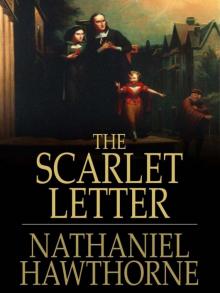 The Scarlet Letter
The Scarlet Letter Young Goodman Brown : By Nathaniel Hawthorne - Illustrated
Young Goodman Brown : By Nathaniel Hawthorne - Illustrated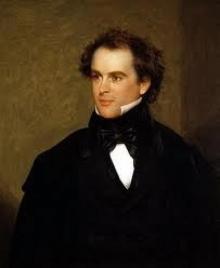 The Birthmark
The Birthmark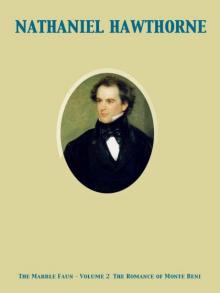 The Marble Faun; Or, The Romance of Monte Beni - Volume 1
The Marble Faun; Or, The Romance of Monte Beni - Volume 1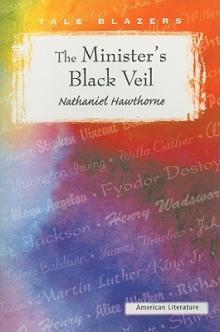 The Minister's Black Veil
The Minister's Black Veil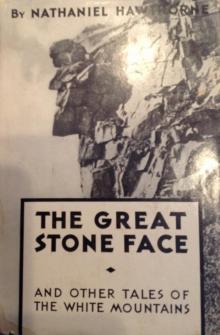 The Great Stone Face, and Other Tales of the White Mountains
The Great Stone Face, and Other Tales of the White Mountains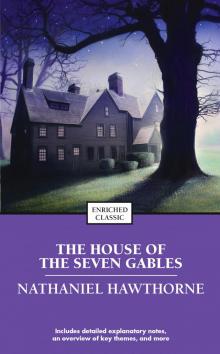 The House of the Seven Gables
The House of the Seven Gables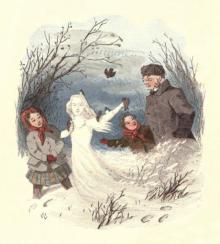 The Snow Image
The Snow Image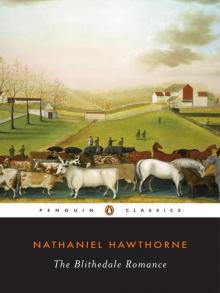 The Blithedale Romance
The Blithedale Romance Rappaccini's Daughter: By Nathaniel Hawthorne - Illustrated
Rappaccini's Daughter: By Nathaniel Hawthorne - Illustrated Twice-Told Tales
Twice-Told Tales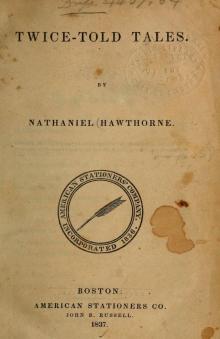 Twice Told Tales
Twice Told Tales The Marble Faun; Or, The Romance of Monte Beni - Volume 2
The Marble Faun; Or, The Romance of Monte Beni - Volume 2_preview.jpg) Footprints on the Sea-Shore (From Twice Told Tales)
Footprints on the Sea-Shore (From Twice Told Tales) Main Street
Main Street_preview.jpg) The Seven Vagabonds (From Twice Told Tales)
The Seven Vagabonds (From Twice Told Tales) Fanshawe
Fanshawe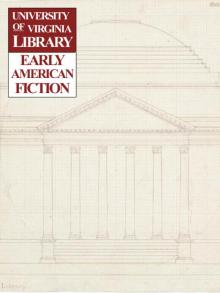 Chippings with a Chisel
Chippings with a Chisel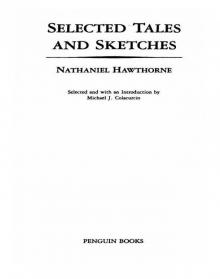 Selected Tales and Sketches
Selected Tales and Sketches Young Goodman Brown
Young Goodman Brown Roger Malvin's Burial
Roger Malvin's Burial The Prophetic Pictures
The Prophetic Pictures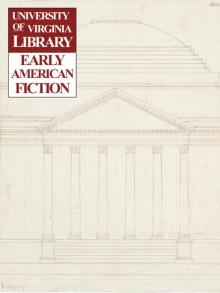 The Village Uncle
The Village Uncle Scarlet Letter (Barnes & Noble Classics Series)
Scarlet Letter (Barnes & Noble Classics Series) The Procession of Life
The Procession of Life Drowne's Wooden Image
Drowne's Wooden Image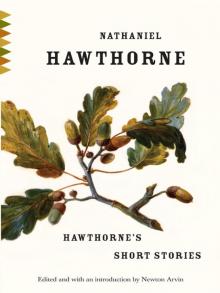 Hawthorne's Short Stories
Hawthorne's Short Stories My Kinsman, Major Molineux
My Kinsman, Major Molineux Legends of the Province House
Legends of the Province House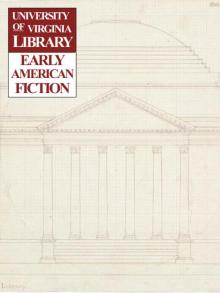 Foot-Prints on the Sea-Shore
Foot-Prints on the Sea-Shore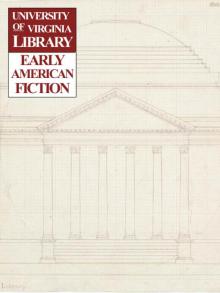 The Haunted Quack
The Haunted Quack Tanglewood Tales
Tanglewood Tales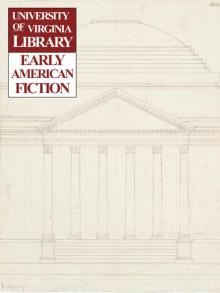 The Seven Vagabonds
The Seven Vagabonds Mosses from an Old Manse, Volume 2
Mosses from an Old Manse, Volume 2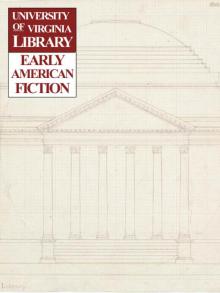 The Canterbury Pilgrims
The Canterbury Pilgrims Wakefield
Wakefield The Gray Champion
The Gray Champion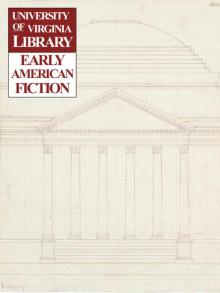 The White Old Maid
The White Old Maid The Snow-Image: A Childish Miracle
The Snow-Image: A Childish Miracle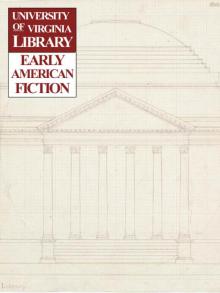 The Gentle Boy
The Gentle Boy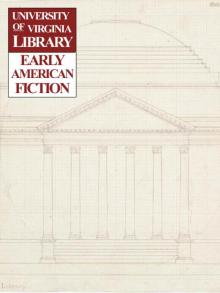 Mr. Higginbotham's Catastrophe
Mr. Higginbotham's Catastrophe![The Threefold Destiny: A Fairy Legend, by Ashley Allen Royce [pseud.] Read online](http://i1.bookreadfree.com/i2/04/10/the_threefold_destiny_a_fairy_legend_by_ashley_allen_royce_pseud__preview.jpg) The Threefold Destiny: A Fairy Legend, by Ashley Allen Royce [pseud.]
The Threefold Destiny: A Fairy Legend, by Ashley Allen Royce [pseud.] Lady Eleanore`s Mantle
Lady Eleanore`s Mantle The Great Carbuncle
The Great Carbuncle The Portable Hawthorne (Penguin Classics)
The Portable Hawthorne (Penguin Classics)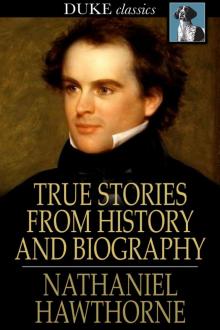 True Stories from History and Biography
True Stories from History and Biography